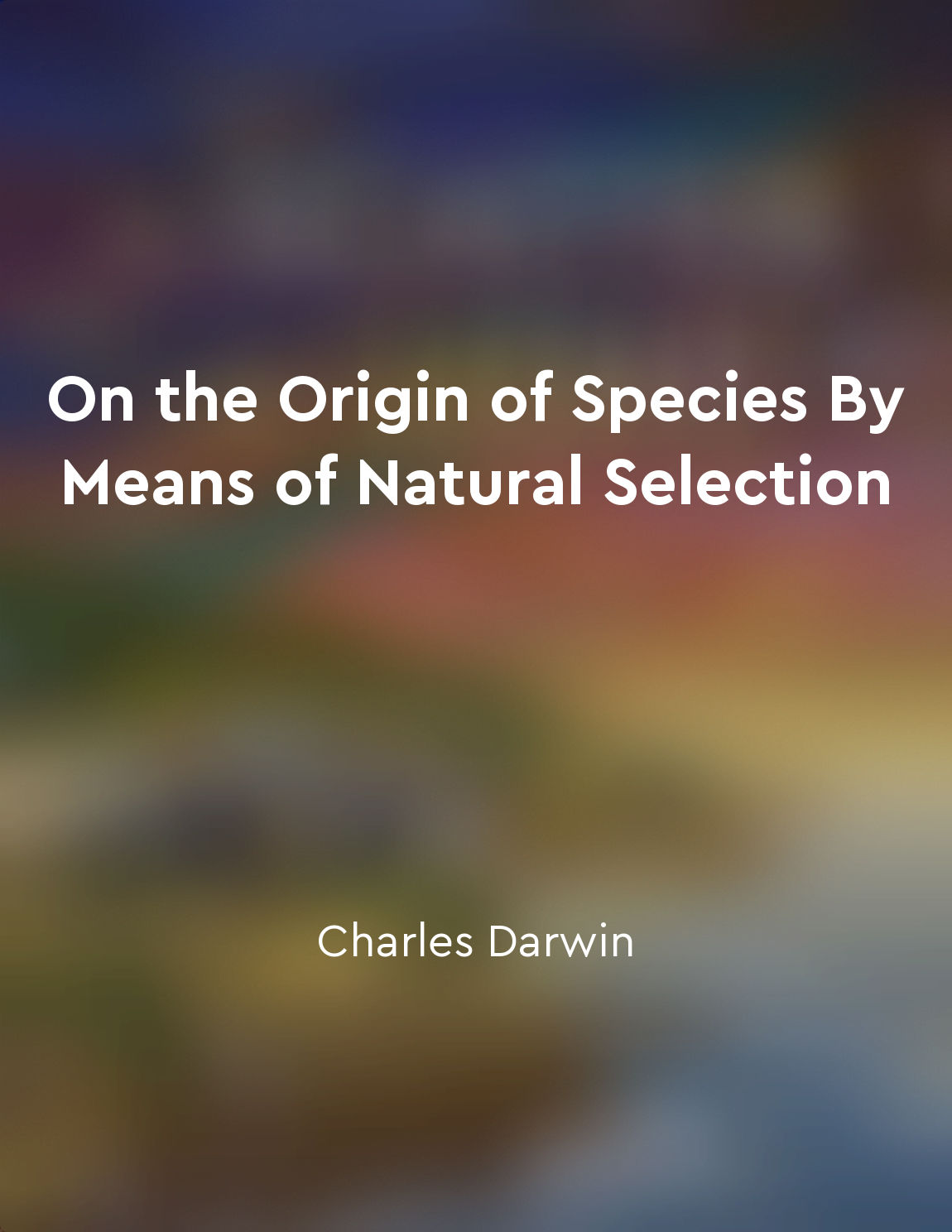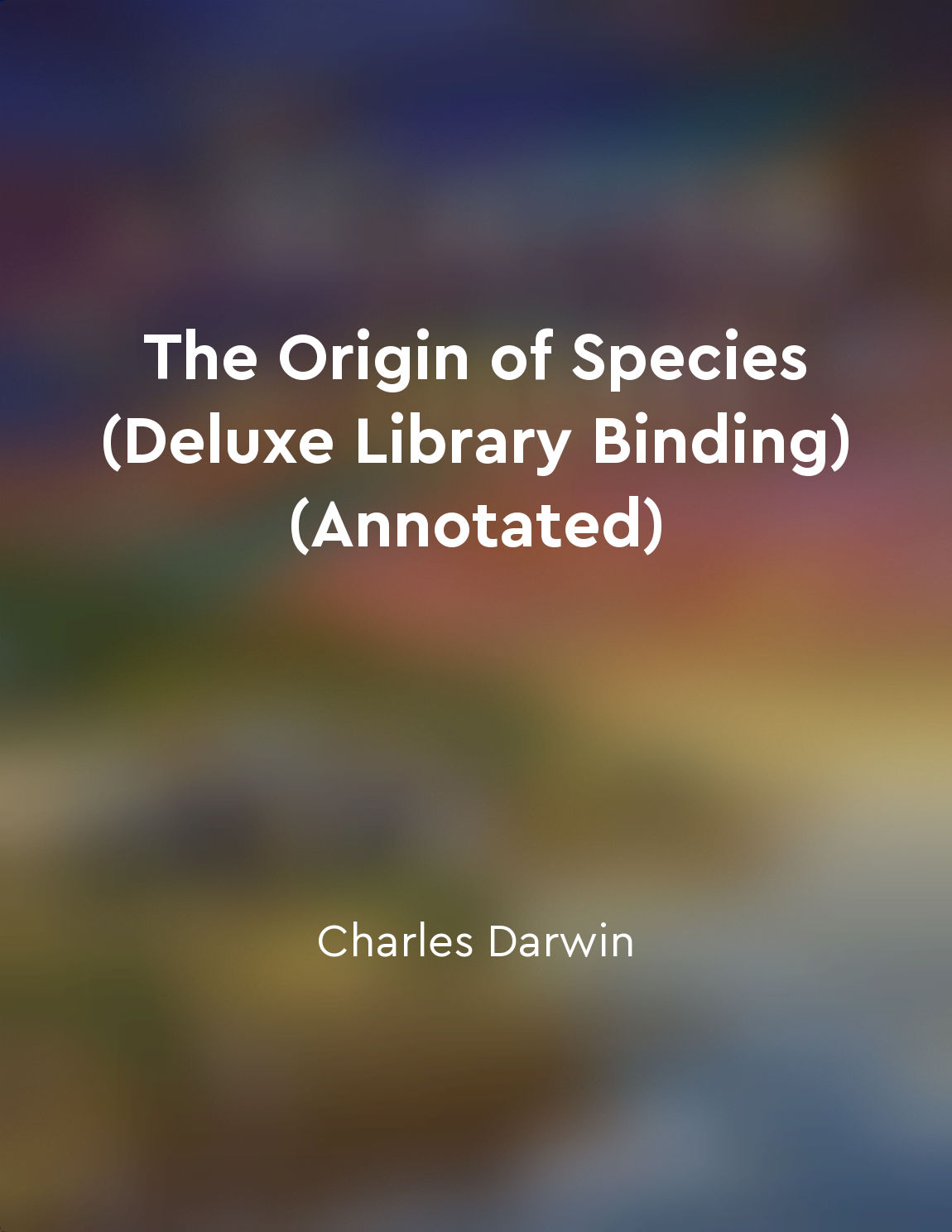Differential reproductive success drives natural selection from "summary" of The Red Queen by Matt Ridley
In the grand sweep of life, the one constant is change. Evolution is a ceaseless dance of adaptation and competition, a never-ending struggle for survival. The driving force behind this relentless process is the differential reproductive success of individuals. The individuals who are better adapted to their environment, who possess advantageous traits that allow them to survive and reproduce, will pass on those traits to their offspring. Natural selection is the mechanism through which these advantageous traits spread throughout a population. Those individuals with characteristics that enhance their chances of survival will be more likely to reproduce and pass on those traits to the next generation. Over time, this process leads to the gradual accumulation of beneficial traits within a population, as individuals with these traits outcompete those without them. In this way, natural selection acts as a filter, allowing only the most well-adapted individuals to pass on their genes. It is a relentless process, constantly shaping and reshaping populations in response to changing environmental conditions. The concept of differential reproductive success is at the heart of natural selection, driving the evolution of life on Earth. Through the lens of the Red Queen hypothesis, we see that this process is not simply about survival, but about competition. Organisms are locked in an endless arms race with each other, constantly evolving new strategies and counter-strategies in a bid to outcompete their rivals. This competition drives the relentless pace of evolution, pushing organisms to constantly improve and innovate in order to gain an edge. In this never-ending struggle for reproductive success, only the fittest survive. Those individuals with traits that give them an advantage in the game of life are more likely to pass on those traits to future generations, ensuring that their genes endure. It is this constant cycle of adaptation and competition that drives the evolutionary process forward, shaping the diversity of life that we see today.Similar Posts

Be willing to pivot
The willingness to pivot is a crucial quality for anyone seeking to successfully navigate the constantly changing landscape of ...
Evolutionary theory is a dynamic and expanding field
Evolutionary theory is a dynamic and expanding field. This statement captures the essence of a discipline that has always been ...
Copernicus proposed a heliocentric model
In the sixteenth century, Nicolaus Copernicus put forward the revolutionary idea that the Earth is not the center of the univer...
The fossil record provides evidence for evolution
The fossil record is a treasure trove of evidence that supports the theory of evolution. Fossils are like snapshots of the past...

Common ancestry of all species
The idea that all living beings have descended from a common ancestor holds immense implications for the study of biology. It i...
Algorithms can mimic evolutionary processes
The concept that algorithms can mimic evolutionary processes is a fascinating one. The idea that complex biological phenomena c...
The study of epigenetics explores how genes are regulated
The study of epigenetics delves into the intricate choreography that orchestrates how genes are activated or silenced within a ...

Environmental factors influence survival rates
In the struggle for existence, the environment plays a crucial role in determining the survival rates of individuals within a s...

Evolution is a universal process
Evolution is not just a biological process; it is a universal phenomenon that governs the development of everything in the worl...
